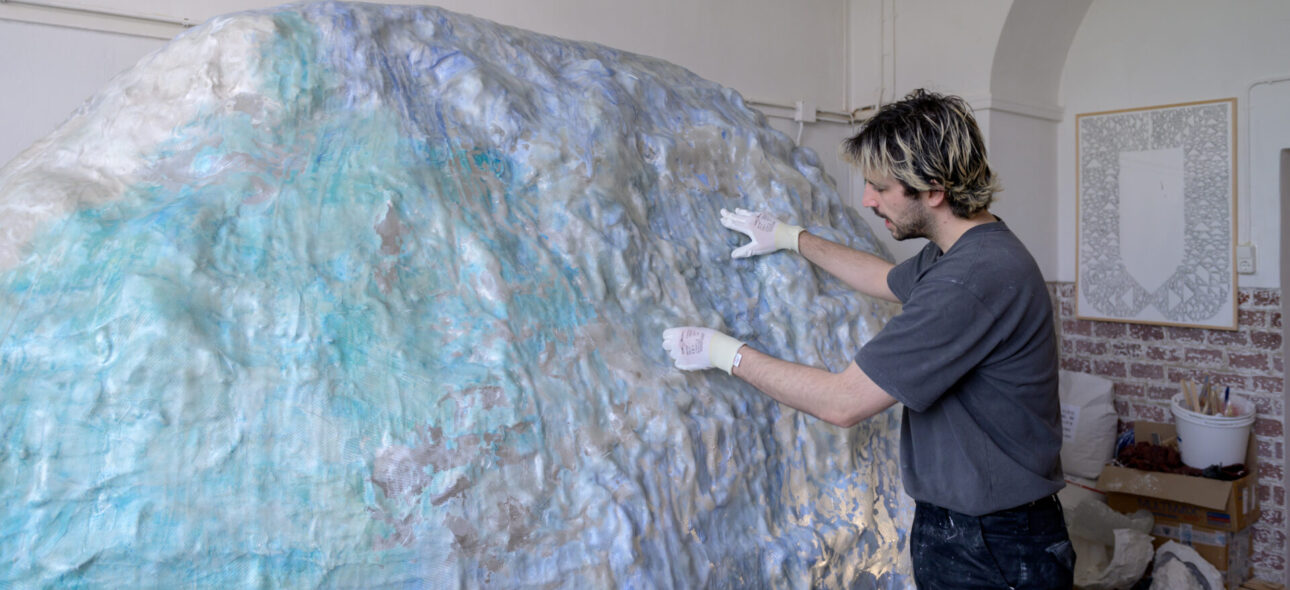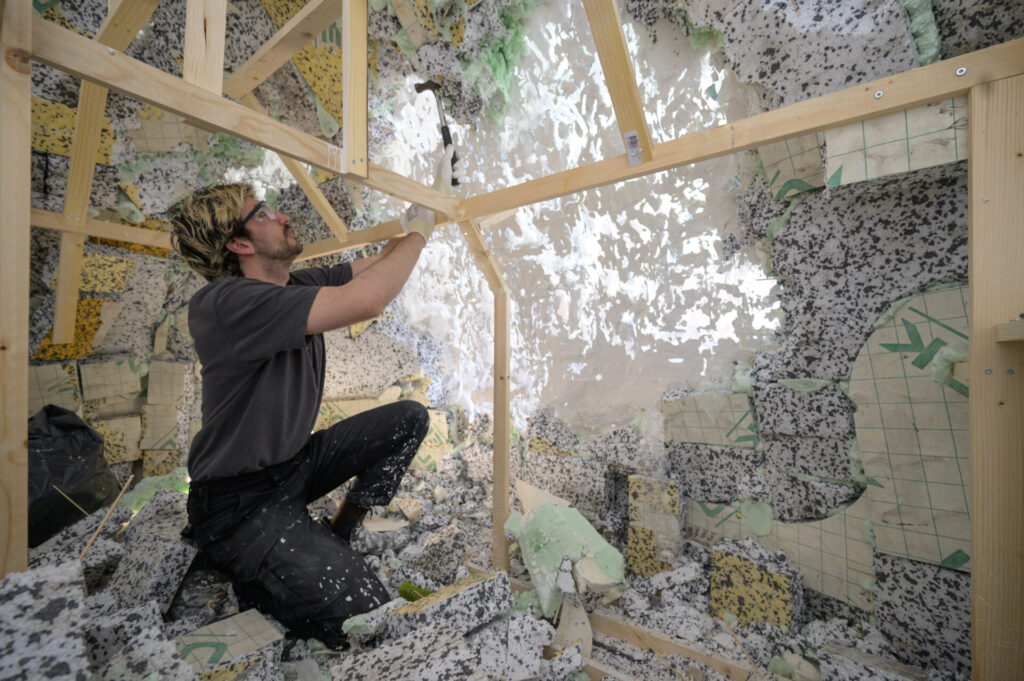STONES ON THE BRAIN

“I had been thinking about stones for some time,” he says. Visual artist Jochem van den Wijngaard has already made several artworks about stones over the years. And with water. He brings thee elements together for Bosch Parade. In De Steen der Waanzin, a floating, ‘humming’ stone. As an homage to the unknown.
The first idea for De steen der waanzin came about two years ago, at an exhibition on the human brain. Jochem: “There I saw the painting The Extraction of the Stone of Madness by Hieronymus Bosch or one of his followers. It shows a doctor with a funnel on his head, a quack, cutting a stone from the head of a ‘madman’ to free him from his madness. That work left a strong impression on me. I had been thinking about stones for some time; I had made more works about them. Now came the idea of making an object that looks like both a floating stone and a giant brain.
Jochem is familiar with mental illness; several people close to him are neurodivergent – from mild forms of autism to manic depression, in some it even led to suicide. Jochem: “As a child, it passes you by, but later it was on my mind quite a lot. I had never made a work about those histories before. By doing it now, I want to enter into a relationship with that past, no longer let myself be led by it but get a grip on it.”
With his artwork, Jochem wants to get the ‘stones of madness’ out of people’s heads, reveal them. Jochem: “In the context of Bosch Parade, I present a stone, as a symbol of neurodivergence, as a contemporary demon. And then not so much the condition as the stigma around it – because it is unknown, something you cannot understand or cannot yet understand. I broadened that motif: the unknown as something that frightens and alienates. But that at the same time fascinates and can lead to growth.”
De Steen der Waanzin is a stone floating on the water, ‘humming’ with different pulsating colours. Jochem: “A kind of Lovecraftean object with its own unclear motivations. With a luminous pattern that symbolises the ambivalence of the unknown, which is simultaneously ominous and enchanting. It so invites us to think about how we relate to something we don’t immediately understand.”
After several scale models in wax and plaster, the final version, out of epoxy and twill weave, is now almost finished. Jochem: “We will now assemble the sculpture in the Garden of Earthly Delights, next week we will assemble the light parts and a sound element. It’s all very exciting.”


